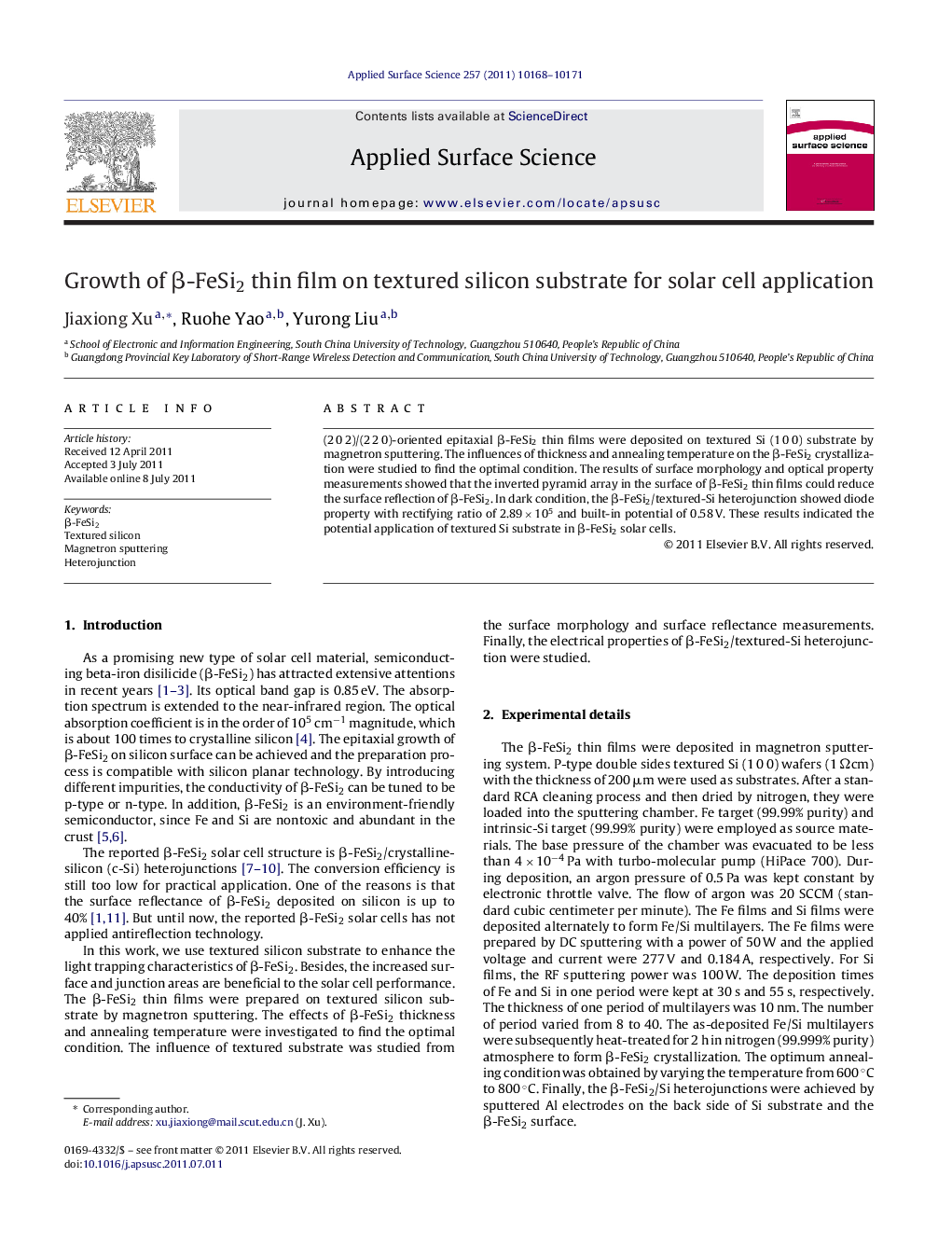| Article ID | Journal | Published Year | Pages | File Type |
|---|---|---|---|---|
| 5367408 | Applied Surface Science | 2011 | 4 Pages |
(2 0 2)/(2 2 0)-oriented epitaxial β-FeSi2 thin films were deposited on textured Si (1 0 0) substrate by magnetron sputtering. The influences of thickness and annealing temperature on the β-FeSi2 crystallization were studied to find the optimal condition. The results of surface morphology and optical property measurements showed that the inverted pyramid array in the surface of β-FeSi2 thin films could reduce the surface reflection of β-FeSi2. In dark condition, the β-FeSi2/textured-Si heterojunction showed diode property with rectifying ratio of 2.89 Ã 105 and built-in potential of 0.58 V. These results indicated the potential application of textured Si substrate in β-FeSi2 solar cells.
⺠The inverted pyramid array textured Si substrate was used as an antireflection technology for β-FeSi2 solar cell application. β-FeSi2 thin film was deposited on the textured Si substrate by magnetron sputtering. ⺠The β-FeSi2 thin film remained as the inverted pyramid array and the average reflectance reduced to 4.33% in the wavelength range from 200 nm to 1500 nm. ⺠The prototype β-FeSi2/textured-Si heterojunction showed a rectifying ratio of 2.89 Ã 105 and a built-in voltage of 0.58 V.
